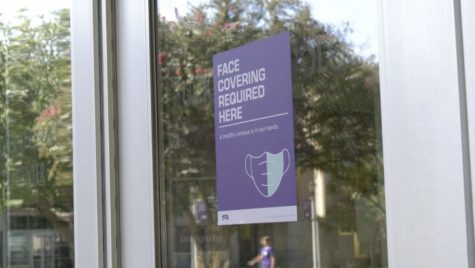Berry Street initiative benefits entire university community
Published Jan 25, 2012
A visit to Mama’s Pizza across the railroad tracks on West Berry Street is a journey into TCU’s past. Decades-old memorabilia lines the walls, grainy color photos of basketball players collect dust and students still get discounts at the front counter. But in the 21st century, the windows succumb to grime and the tables hold few students.
Such is the case with most of the stretch of Berry Street between University Drive and I-35W, a forgotten corner of the university community, now most commonly known as simply “Scary Berry.”
The City of Fort Worth’s Berry Street Initiative, laid out at length in a June 2011 town hall meeting, calls for extensive redevelopment of the stretch of road. The initiative aims to create a livable, connective center with new buildings, zoning, streets, parks and even a commuter rail station. Public and private investment put over $215 million into the project between 2001 and 2011, with results already visible near TCU.
Yet more work is essential. The city and its partners, along with the university community, must support the completion of the initiative for its great economic, social, aesthetic and cultural impacts. TCU must, in turn, strive to be a leading advocate for Berry Street, lest an institution with assets totalling more than one billion dollars fails to be civically responsible to a next-door neighbor in need.
Economically, the renovation and opening of businesses in the Berry Street corridor will stimulate investors, bring activity and purchasing power and create jobs for Fort Worth residents. Other such developments, notably the West 7th Street area, have witnessed explosive growth in economic activity from renovation work.
Public-private collaboration in this way maximizes resources and secures the neighborhood’s future.
Design concepts for the Berry Street Initiative call for mixed-use buildings and a walkable, community feeling. Part of the popular New Urbanism movement in city planning, the Berry Street of tomorrow can create social stability, reduce fuel and utilities costs and return the idea of neighborhood to its original intent: a place of gathering between diverse groups sharing the same space.
Furthermore, the addition of a TRE Rail stop is an important step in sustainability and environmental sensitivity. The development project brings Fort Worth closer to being a modernized, exemplary city consistently ranked in the top 10 of best places to live and work in the United States.
However, crime is a painful reality up and down the Berry corridor. TCU crime alerts frequently report incidents on or immediately off the avenue. Fort Worth arrest records reveal thefts, assaults and burglaries committed in the area.
The economic and social benefits combined with a better appearance can reduce crime and improve law enforcement. Over time, the street can lose the “scary” moniker and become a desirable destination for residents and students alike.
Long-term results are in the realm of prediction, but some evidence already rests in the present. The inaugural West Berry Block Party happened in April 2011, with plans to continue, and new construction projects hold promise.
A new culture and a possibility of growth surround West Berry, but its success depends in part on our investment as a university. Try Mama’s Pizza sometime, and get the ball rolling.
Pearce Edwards is a junior political science major from Albuquerque, N.M.












